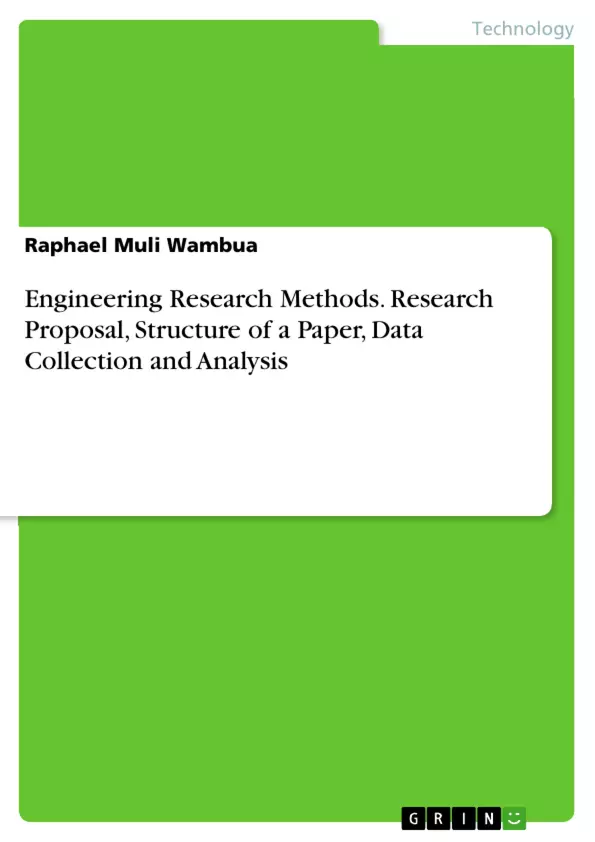"Engineering Research Methods" is a text book intended for students and instructors in University or higher education for postgraduate students undertaking Engineering and related applied Sciences. Some of the fields which this text is relevant include Agricultural Engineering, Irrigation and Drainage Engineering, Civil and Environmental Engineering, Water Resources Engineering, Mechanical Engineering, Hydraulics Engineering and Electrical Engineering. Other related Physical and Applied Sciences Field may include General Agriculture, Agricultural Education and Extension, Horticulture sciences
The content of this text book has been presented in a coherent style, arranged in logical sequence that adheres to University and higher education curriculum as it is customized to the postgraduate research that take place in Engineering and Applied Sciences. This makes the book suitable for every postgraduate student. For proper illustrations, some examples have been quoted especially in research problem and research objectives to help postgraduate researchers to grasp knowledge and skills on research problem identification. Each chapter is well formulated with relevant diagrams and illustration for the readers to easily comprehend the details presented. For the purpose of improvement, any criticism from students, trainers and practitioners will be thankfully received by the author.
Inhaltsverzeichnis (Table of Contents)
- Introduction
- Research Process
- Research Methodology
- Research Design
- Literature Review
- Research Ethics
- Research Proposal
- Data Collection
- Data Analysis
- Report Writing
Zielsetzung und Themenschwerpunkte (Objectives and Key Themes)
This textbook aims to provide a comprehensive guide to engineering research methods, covering the entire research process from conceptualization to report writing. The text is specifically tailored to engineering and applied sciences research, offering valuable materials for research proposal development, implementation, and thesis writing. It serves as a resource for postgraduate students pursuing Masters and Doctoral degrees in Engineering, and for instructors and professionals who wish to apply research methods in their field.
- Research Process and Methodology
- Ethical Considerations in Engineering Research
- Effective Research Proposal Development
- Data Collection and Analysis Techniques
- Engineering Research Report Writing
Zusammenfassung der Kapitel (Chapter Summaries)
- Introduction: This chapter provides an overview of the research process, including the key elements of research methodology and design. It lays the foundation for understanding the fundamental principles of engineering research.
- Literature Review: This chapter explores the importance of conducting a thorough literature review, highlighting strategies for identifying relevant sources, synthesizing information, and critically evaluating existing research.
- Research Ethics: This chapter delves into ethical considerations in engineering research, covering topics such as plagiarism, data integrity, and responsible research practices.
- Research Proposal: This chapter focuses on the development of a well-structured research proposal, outlining the essential components, including research questions, objectives, methodology, and expected outcomes.
- Data Collection: This chapter provides guidance on various data collection methods commonly used in engineering research, including surveys, experiments, and simulations.
- Data Analysis: This chapter examines different data analysis techniques appropriate for engineering research, including statistical analysis, qualitative analysis, and visualization methods.
Schlüsselwörter (Keywords)
Key terms and concepts explored in this textbook include research methodology, research design, literature review, research ethics, research proposal, data collection, data analysis, report writing, engineering research, applied sciences research, postgraduate research, thesis writing, and research methods in engineering.
- Citar trabajo
- Dr. Raphael Muli Wambua (Autor), 2023, Engineering Research Methods. Research Proposal, Structure of a Paper, Data Collection and Analysis, Múnich, GRIN Verlag, https://www.grin.com/document/1321942



